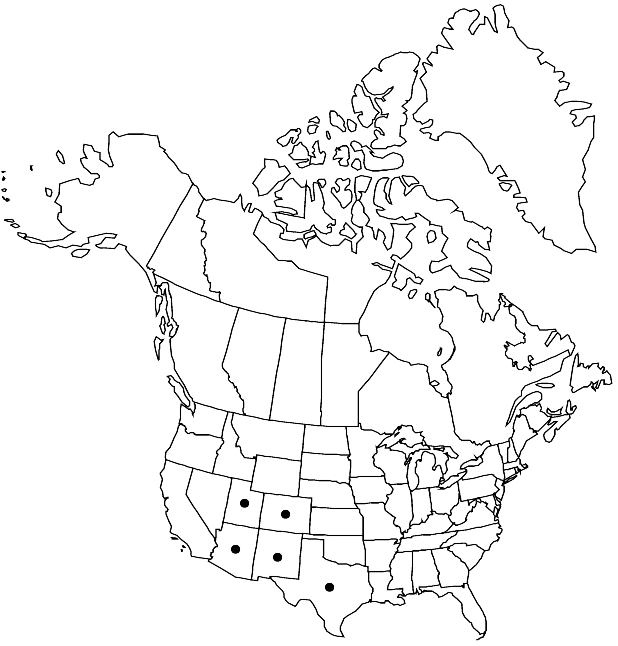Thelypodium wrightii
Smithsonian Contr. Knowl. 3(5): 7. 1852.
Biennials; slightly glaucous, glabrous. Stems branched distally, (6.5–)9.5–22.5(–28) dm. Basal leaves (and proximal cauline): petiole (2–)4.5–8.5(–13.7) cm; blade often lanceolate, sometimes oblanceolate in outline (lateral lobes oblong to linear or deltate), (6.5–)9.5–22.5(–28) cm × 28–55(–75) mm, margins pinnately lobed or lyrate (lobes entire or denticulate). Cauline leaves petiolate; blade lanceolate to linear-lanceolate, 3.5–8.5(–13.5) cm × 7–14(–23) mm, margins usually entire or dentate, rarely lobed. Racemes somewhat lax, considerably elongated in fruit. Fruiting pedicels horizontal to divaricate, sometimes reflexed, straight or curved, sometimes secund, slender, (5–)7–13(–17) mm, slightly flattened at base. Flowers: sepals spreading or ascending oblong to linear, (3–)4–6(–7) × (0.8–)1–1.3(–1.5) mm; petals usually white, rarely lavender, linear or oblong, 4–7.5(–9) × 1–1.8(–2) mm, margins not crisped, claw not differentiated from blade (base sometimes clawlike, to 2 mm, widest at base); nectar glands confluent; filaments equal, (3–)3.5–6.5(–8.5) mm; anthers (1–)1.5–2.5(–3) mm, circinately coiled; gynophore 0.2–2(–5) mm. Fruits horizontal or reflexed, torulose, straight to somewhat curved, flattened, (2.5–)3.8–7.4(–9) cm × 1–1.2(–1.5) mm, (replum not constricted between seeds); ovules 76–128 per ovary; style usually clavate to subclavate, rarely cylindrical, (0.5–)0.8–2(–3) mm. Seeds 0.7–1.3(–1.5) × 0.5–0.8 mm.
Phenology: Flowering (Mar-)Jun–Oct.
Habitat: Rock crevices, shady slopes, rocky hillsides, canyons, stream banks, creek beds, pinyon-juniper communities, oak woodlands
Elevation: 1200-2300 m
Distribution

Ariz., Colo., N.Mex., Tex., Utah, Mexico (Baja California, Chihuahua, Coahuila, Hidalgo).
Discussion
Study of extensive material that has accumulated during the past three decades reveals that the differences between subsp. oklahomensis and subsp. wrightii, which are based solely on variations in gynophore and fruit lengths, do not hold as clearly as previously thought (I. A. Al-Shehbaz 1973; R. C. Rollins 1993).
Selected References
None.